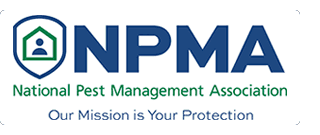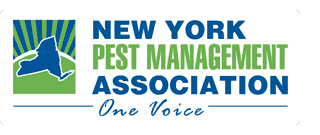Challenge Pest Guide
Challenge Pest Management has over a decade of experience exterminating mice, rats, cockroaches, waterbugs, bed bugs, fleas, flies, ants, bees, wasps, and any other pests. Look for these signs of infestation:
Mice & Rats
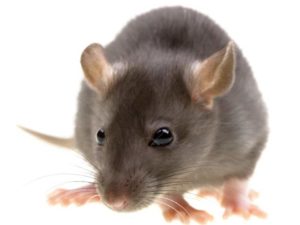 Rodents can be difficult to keep out of structures. For instance, mice can squeeze through spaces as small as a dime and rats can fit through holes the size of a quarter. For proper rodent pest control, seal any cracks and voids. Ensure there is proper drainage at the foundation and always install gutters or diverts which will channel water away from the building. Our rodent exterminator can also help you identify ways in which a rodent may be entering your premises.
Rodents can be difficult to keep out of structures. For instance, mice can squeeze through spaces as small as a dime and rats can fit through holes the size of a quarter. For proper rodent pest control, seal any cracks and voids. Ensure there is proper drainage at the foundation and always install gutters or diverts which will channel water away from the building. Our rodent exterminator can also help you identify ways in which a rodent may be entering your premises.
For service information regarding rats, click here.
If you do find signs of an infestation, contact us promptly. We will be able to confirm the species and recommend a course of rodent control treatment.
Cockroaches
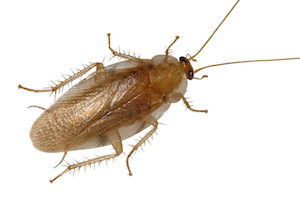 Cockroaches have been long despised by homeowners due to their creepy appearance. Cockroach pest control and management are important for health and safety reasons, because cockroaches are known to cause allergic reactions and trigger asthma attacks, especially in children. They also spread nearly 33 kinds of bacteria including E. coli and Salmonella. Visit one of our pest guides to see various types of cockroaches, as well as find information on cockroach prevention and control.
Cockroaches have been long despised by homeowners due to their creepy appearance. Cockroach pest control and management are important for health and safety reasons, because cockroaches are known to cause allergic reactions and trigger asthma attacks, especially in children. They also spread nearly 33 kinds of bacteria including E. coli and Salmonella. Visit one of our pest guides to see various types of cockroaches, as well as find information on cockroach prevention and control.
Bed Bugs
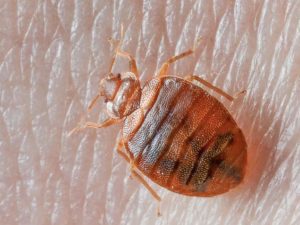 Bed bugs get their name from their habit of feeding on human hosts in bed. They are excellent hitchhikers, easily transported and are found in many different types of dwellings, which makes them difficult to control. For this reason, it is crucial that you learn how to identify bed bugs.
Bed bugs get their name from their habit of feeding on human hosts in bed. They are excellent hitchhikers, easily transported and are found in many different types of dwellings, which makes them difficult to control. For this reason, it is crucial that you learn how to identify bed bugs.
Bed bug infestations continue to plague Americans. In fact, 99.6 percent of pest professionals treated for bed bugs in 2014, according to our most recent Bugs Without Borders survey.
For service information regarding bedbugs, click here.
Kissing Bugs
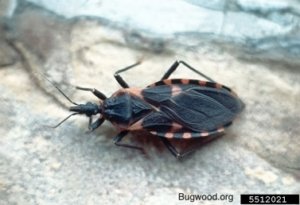 Primarily a nocturnal pest, kissing bugs hide during the day and feed on the blood of mammals at night. Feeding typically requires 20-30 minutes, during which time they inject an anesthetizing agent in their saliva, similar to that of bed bugs, so the host is not aware that they are being bitten by a kissing bug.
Primarily a nocturnal pest, kissing bugs hide during the day and feed on the blood of mammals at night. Feeding typically requires 20-30 minutes, during which time they inject an anesthetizing agent in their saliva, similar to that of bed bugs, so the host is not aware that they are being bitten by a kissing bug.
Kissing bugs carry the parasite Trypanosoma cruzi that causes Chagas disease, a potentially fatal illness. According to the Centers for Disease Control and Prevention (CDC), nearly 300,000 people in the United States are infected with the parasite. Symptoms of Chagas disease include fever, fatigue, body aches, headache, a rash where the parasite entered the body and swelling around the eyelids.
If a kissing bug infestation is suspected, contact us immediately to discuss how to get rid of the infestation through a proper course of pest control.
Fleas
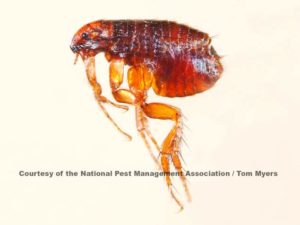 Fleas are parasites that feed on the blood of any warm-blooded body. Cat fleas are the most common domestic flea, but dog fleas, human fleas and oriental rat fleas can also be found. Fleas do not fly. Instead, they use their powerful legs to jump onto a passing host. Controlling and/or exterminating fleas can eliminate an infestation.
Fleas are parasites that feed on the blood of any warm-blooded body. Cat fleas are the most common domestic flea, but dog fleas, human fleas and oriental rat fleas can also be found. Fleas do not fly. Instead, they use their powerful legs to jump onto a passing host. Controlling and/or exterminating fleas can eliminate an infestation.
Flies
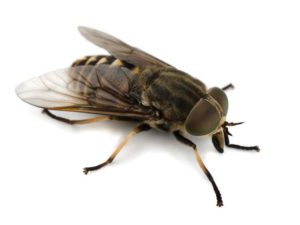 Non-biting flies, such as houseflies, are not only nuisance pests, but they are also responsible for transmitting diseases and contaminating food. For instance, flies are capable of contaminating food and transferring more than 100 pathogens, including malaria, salmonella and tuberculosis. Food contamination is one of the main reasons that fly pest control is so important.
Non-biting flies, such as houseflies, are not only nuisance pests, but they are also responsible for transmitting diseases and contaminating food. For instance, flies are capable of contaminating food and transferring more than 100 pathogens, including malaria, salmonella and tuberculosis. Food contamination is one of the main reasons that fly pest control is so important.
If you have a fly infestation, contact us promptly. We will be able to inspect your premises, confirm the species and recommend a course of pest control to treat and get rid of the flies.
Fruit Flies
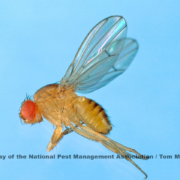
It’s not fun or easy dealing with fruit flies in your kitchen – or anywhere else.
These bugs seem to be present at all times of the year and are a frustrating pest to battle. For one thing, their small size makes them difficult to see until they’re buzzing by your face. They also seem to reappear even after you’ve cleaned everything you can think of that might attract them.
Ants
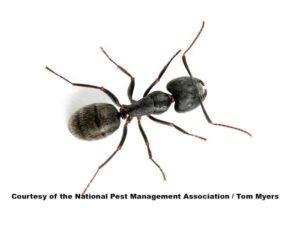 There are more than 700 ant species found in the U.S., although only about 25 species commonly infest homes. Ants are social insects that typically live in underground colonies, made up of workers and a queen. Ants will eat practically any kind of food, but are especially attracted to sweets. Ant identification is relatively simple due to their three distinct body regions: head, thorax and abdomen, as well as antennae. Despite similar construction, ants vary in overall appearance. Small or large ants and brown or black ants are common nicknames for different species.
There are more than 700 ant species found in the U.S., although only about 25 species commonly infest homes. Ants are social insects that typically live in underground colonies, made up of workers and a queen. Ants will eat practically any kind of food, but are especially attracted to sweets. Ant identification is relatively simple due to their three distinct body regions: head, thorax and abdomen, as well as antennae. Despite similar construction, ants vary in overall appearance. Small or large ants and brown or black ants are common nicknames for different species.
If you do find signs of an ant infestation, contact us promptly. We will be able to inspect your premises, perform proper ant species identification, and recommend a course of ant control and extermination.
Bees & Wasps
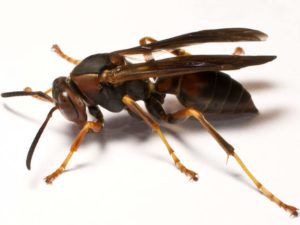 Stinging insects like bees and hornets send more than 500,000 people to the emergency room each year. These pests are especially active during the second half of summer and early fall when the colonies forage for food that will sustain their queens during the winter.
Stinging insects like bees and hornets send more than 500,000 people to the emergency room each year. These pests are especially active during the second half of summer and early fall when the colonies forage for food that will sustain their queens during the winter.
If you find a stinging insect nest on your property, contact us promptly. We will be able to inspect your premises, confirm the type of stinging insect and recommend a course of pest control treatment.
Pest information and images courtesy of the National Pest Management Association.

